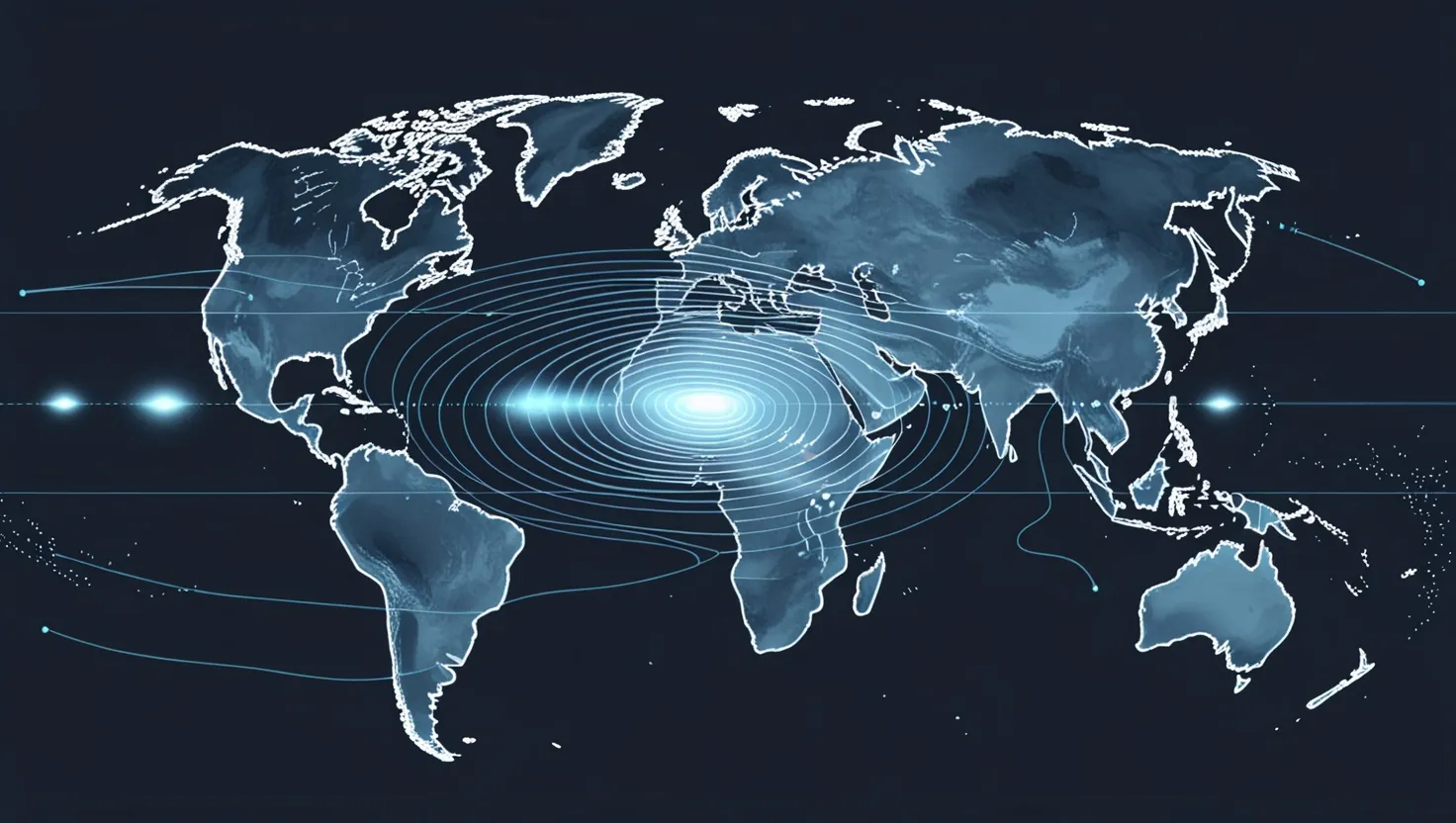Have you ever paused to consider what patterns lie beneath the invisible envelope surrounding our planet? The idea that Earth’s magnetic field, this shield against cosmic chaos, could behave in ways that defy our carefully mapped laws isn’t just an exercise in scientific speculation—it’s a reality documented in places as isolated as the Antarctic to as bustling as Tokyo. The more closely you follow the magnetic field’s quirks, the more it begins to resemble a global conversation carried out in a language we’re only just starting to overhear.
“Not everything that counts can be counted, and not everything that can be counted counts.” This old adage rings especially true when you witness eight episodes of synchronized magnetic anomalies. These events, not easily explained by solar flares, tectonic shifts, or technical hiccups, continue to spark fresh questions among those who monitor the pulse of the planet.
Let’s start with the Atlantic in 2017, where three deep-sea sensors and a lone research vessel sat perched over 1,200 miles apart. What’s routine here is the quiet lull of a solar minimum; what’s extraordinary is that all four picked up identical magnetic spikes at the same moment. No sunspots, no solar wind, just an unexplained jolt. Could these magnetic ripples be the symptom of some unknown source deep within the Earth? Or is there a cosmic influence that slips past our conventional detectors? The episode teased out a detective’s hunch: not all energy that shapes our world comes from the heavens or churns up from below.
The second event challenges the very axis on which we think the world spins. In 1994, polar stations in Antarctica and the Arctic registered mirror-image magnetic readings for 72 continuous hours. Imagine two piano keys hit at the same rhythm, one ringing out a high note while the other hums a bass. Their connection, precise and opposite, has never repeated quite so perfectly since. Were the poles speaking to one another? If so, what triggers the conversation? These questions tug at our sense of planetary unity—and division.
“Somewhere, something incredible is waiting to be known.” These words, often quoted by those who gaze at the stars, apply equally to those who dig into the ground. In 2008, seismic monitors not in labs but scattered across the Sahara, Gobi, and Australia’s Outback ticked off the same high-frequency magnetic oscillations. Not just a passing blip—these pulses arrived and departed as one. Locals soon reported that their compasses spun uselessly. What could tie such remote deserts together? Some argue deep mantle currents or planetary-scale electric circuits; others suggest human activities might be more synchronized than we realize. The more we map, the less isolated these points seem.
Fast forward to 2021 when major urban centers—Tokyo, London, Mexico City—reported simultaneous failures of GPS and compass systems. What makes these “urban node disruptions” even more intriguing is what was found beneath the pavement: magnetic “hotspots” that corresponded in strength and pattern. Utility workers, more accustomed to pipes and cables, now found themselves tracing invisible forces. Could the web of human technology itself be amplifying or shaping new kinds of magnetic events?
“How is it that nothing is ever quite so simple as it seems?” Science asks this question again and again, and nowhere does it apply more than to the oceans. Probes along the Mid-Atlantic Ridge and the fiery rim of the Pacific detected magnetic pulses that traveled faster than geologists believe possible. Tsunami sensors registered movement, but nothing physical passed by. Seismologists were left scratching their heads. Are there energy waves within Earth’s crust that speed along unseen highways, or do we see the fingerprint of something external, perhaps magnetic interactions on a planetary scale?
Siberia, vast and often silent, pipes up once a year with its own set of riddles. Since 2010, far-flung monitoring stations there have recorded the same intricate magnetic waveform, almost as if a song were broadcast from a wandering transmitter. Yet the source drifts each year, and no weather, geological event, or known human activity lines up. What could cause such a precise, repeatable phenomenon to migrate unpredictably? These “Siberian Signal Repeats” have bred theories from shifting metallic masses deep below to undisclosed military experiments.
In 2015, we caught a glimpse behind the curtain of classified technology. Military satellites, while silent about their real objectives, ended up leaking data—matching magnetic readings captured both in orbit and deep inside secret underground facilities. During certain tests, the match was exact, down to the tiniest fluctuation. Was this a coincidence or evidence that our infrastructure is now capable of influencing, or even synchronizing with, the planet’s natural fields? If satellites and underground stations can “talk” in magnetic pulses, the possibility arises that some of these phenomena are engineered, not accidental.
And then, perhaps most baffling, came the “Global Quiet Zone” of 2003. For thirteen minutes, magnetometers worldwide showed a flat line. No movement, no spike, just a brief hush. Solar weather was calm, equipment showed no faults, yet everywhere at once, the magnetic field took an inexplicable pause. What can compel an entire planet’s shield to momentarily cease its never-ending ripple? Was it a cosmic event too subtle for our other instruments to catch, or does the Earth have its own kind of “reset” button we have yet to comprehend?
“Science is the belief in the ignorance of experts.” This quip captures what it feels like to chase down these events. Each time one thinks the rules are clear, nature offers a counterexample. There’s a temptation to wave these away as errors or noise, but that risks missing what these patterns might be trying to teach us. Maybe you’ve wondered whether our planet is simply more interconnected than surface observations reveal. Could these synchronous disturbances signal tectonic events gearing up, or even be warnings about climate or cosmic changes ahead?
What if the Earth’s magnetic field is not a static shield, but a communication network—responsive, adaptive, perhaps even intelligent in a way science hasn’t begun to measure? These stories hint at a hidden choreography. We’re starting to question whether our current models of magnetism are too simplistic, or whether the human influence on the planet now extends to domains we once thought were out of reach.
On a personal level, consider how often the devices in your pocket depend on the reliability of these fields. When they falter unexpectedly, our faith in the predictability of nature itself is shaken. Would you trust a compass on the day of one of these global anomalies? Would you believe a GPS map if dozens of cities were reporting simultaneous errors?
If you could listen to the Earth, what questions would you ask? Would you want to know why its poles sometimes mirror one another, or why a dozen deserts pulse in unison? And if the answers pointed not to external cosmic influences, but to the rising complexity of human networks, how would that change the story we tell ourselves about our place on this planet?
Looking ahead, the only certainty is that more anomalies will come. The more sensors we place, the more subtle signals we are likely to detect. Each one asks us to keep our models flexible, our egos in check, and our imaginations open. Just because something hasn’t happened before—or hasn’t been measured—does not mean it cannot shape our understanding tomorrow.
“Equipped with his five senses, man explores the universe around him and calls the adventure Science.” The adventure here is far from over. Instead of thinking of Earth’s magnetic field as merely a shield or a navigational aid, perhaps we should see it as an active field of inquiry, capable of surprising us at any moment with a new pattern, a new connection, or a new mystery. Will you be ready to listen when it speaks?






